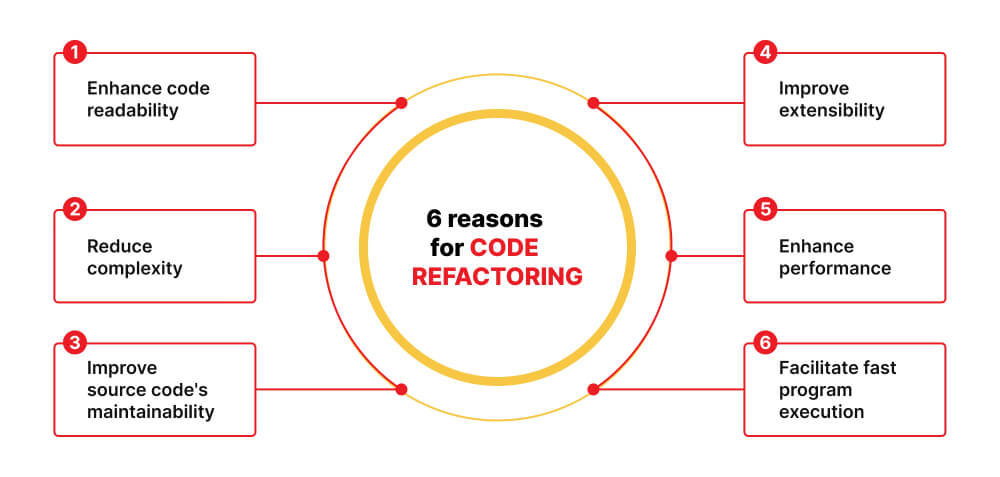When Should Teams Refactor Their Code?

If you’re like most team members, you know that when you first get your hands on a piece of code, it’s riddled with bugs. Sometimes, coding is like cleaning your house. You don’t want to do it, but you know it’s important.
In the same way that dust accumulates on your bookshelves, non-adherence to proper design guidelines can result in a codebase that is difficult to maintain, full of duplicated code and improper dependencies between classes.
That’s where code refactoring comes in. Code refactoring is the process of restructuring your existing code without changing its functionality or external behavior. It helps you maintain good, dependable code hygiene.
When should teams refactor the code?
Anytime you update an application or add any new features to it, you should refactor the existing code before doing so. You can also refactor code after a release has gone live; just remember that you should only refactor working code after all your tests come back clean!
As a program is evolved, its complexity increases unless work is done to maintain or reduce it.
— Manny Lehman, Computer Science Researcher
If you’re planning to launch an application in the next few months, you don’t want to start refactoring your code. Refactoring is a time-consuming process, and it will delay your delivery. Plus, you’ll need to test the new code to make sure it’s functionally equivalent to the old one.
But let’s say you’ve already launched your product. You should definitely refactor your code when it has become hard to read and maintain. If you don’t do it soon, your tech debt will pile up, and you’ll end up with a mess that nobody wants to work on.
Refactoring isn’t a one-time activity. It’s an ongoing commitment that you make to your code base. No matter how many times you refactor, your code will never be perfect—refactoring leads to more refactoring, and more refactoring after that.
Code Refactoring vs Code Optimization
| Code Refactoring | Code Optimization |
| It helps make the code cleaner so that it is easier to read and understand | It helps in faster execution and compilation of the code |
Focuses on:
|
Focuses on:
|
Code isn’t something that arrives at some state of perfection and then stays there forever. Code changes all the time, and it should change as new features are added or when existing features are modified or removed. Refactoring is designed to support this change process.
Rather than focusing on the so-called perfection of your application’s code, it’s worth it to focus instead on continuous progress. Accept that refactoring is an ongoing maintenance activity, since it’s designed to support adaptation. It’s likely that the code you refactored once might become stale over time, and you’ll need to refactor it once again.
Here are some of the code refactoring best practices:
Allocate Hours for Refactoring Every Sprint Cycle
A team can maintain code quality throughout the development process by refactoring small chunks of code at a time. For example, if a team commits 10 hours of its sprint to refactoring code, then this becomes standard practice.
Mark Comments in the Product Backlog
Developers know when a code smell has contaminated the code, and can add notes to that product backlog item and estimate “when will they refactor it.” This serves as a reminder, and helps in returning to the item later on in the product's lifetime.
Run Tests
Unit testing is an integral part of refactoring in order to validate the code's proper functioning after making changes. This is why you should run tests before, during and after refactoring.
Leverage automation to refactor code
Developers can use tools such as Visual Studio Intellicode, Eclipse IDE, Rider, and SonarQube to run code refactoring alongside development. By doing so, they can speed up time to market.
Don't fix bugs or add features
During the sprint, try to keep the team focused on one task at a time. During the first 20% of their time, they'll add new user stories; during the next 20%, they'll fix bugs; and during the final 60%, they'll refactor code.
Follow the latest technology and thought leadership by subscribing to Atomate newsletters.
Dive into cutting-edge tech trends and visionary insights, curated monthly for forward-thinkers like you.
